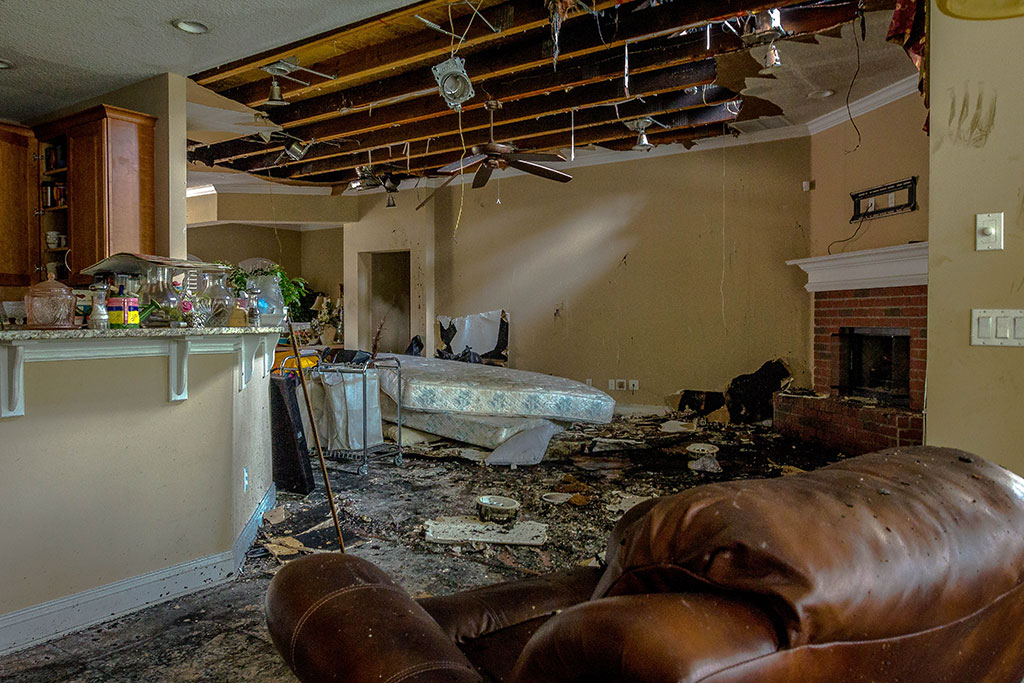Dealing with the aftermath of a fire is difficult for a few reasons. If you are cleaning up after a home fire, it is both mentally and psychically tough. You are looking at what may be left of your home from the fire damage. In 2009, there were 377,000 residential fires in the United States, or 78% of the total number of structural fires, a residential fire occurred every 84 seconds, and $7,796,000,000 of property losses from fire damage occurred in residential properties, alone.
While some fires are a total loss not all of them are. There may be nothing, or very little, left to save, but many fires are not as serious. In some cases, there is little structural damage to the home. Even in those cases, there is usually significant smoke/soot damage to the contents of the home. When the contents of a home such as furniture, kitchen utensils, dishes, toys, clothing, bedding and draperies, or other personal items are damaged by smoke/soot mitigating the fire damage, cleaning and restoring the contents to its pre-loss condition is a job for restoration professionals. The first concern in every fire situation is safety. Restoration professionals will take steps to make sure all workers and others entering a structure after a fire are safe. It is important to ensure the structure is sound before any evaluation is done or work begins.
Smoke/soot particles are Products of Incomplete Combustion (PIC). These are carcinogens that are considered to be dangerous. They can start to degrade contents of a home within just a few days, so dealing with them properly and immediately is key. When dealing with smoke/shoot it is important to wear a respirator, such as an N-95 or N-100, and gloves or other protective clothing which will protect you when entering the structure. Ventilation is very important and if at all possible, the contaminants in the air should be let outside.
Once you have taken safety precautions the next step is to determine which items should be cleaned and where. Most soft goods such as bedding, clothing, and draperies will be taken to a dry cleaning or laundry facility for processing. Remaining items will be sorted as to whether the items are suitable for the restoration process or are to be thrown away. Careful records should be kept of all discarded items for later consideration for compensation by the insurance company. With restorable items, the restoration professional may decide conditions in the home are severe enough to warrant removing the smoke/ soot damaged items to a controlled environment outside of the home for cleaning. This process is referred to as a “pack out.” If this is done, careful records must be kept for items taken, location of the items, and condition of the items when removed. Inventory lists should be kept on stored items. In other circumstances, the restorer may determine that conditions allow for cleaning and storing the contents within the home, or perhaps the garage.
A fire damage restoration professional will evaluate the contents in every room to determine whether they should be replaced, or can be successfully restored to a pre-loss condition. Cost, sentimental value, and antique value are all considerations. In many cases, if items have not been damaged directly by the fire or by excessive heat, they do not need to be discarded. Luckily, they can be restored. A professional will perform testing to determine the appropriate product and mix ratio to use on each content item. Today’s restoration professional will use environmentally friendly products for all cleaning and restoration processes. This is an important consideration when choosing a restoration company.
Food items must be treated with caution. Any open items should be thrown away. Unopened items in original packaging that were away from the heat can be considered safe. If there is any doubt, throw the items away. Remember to keep an inventory of what is being thrown away.
Odor issues come with smoke/soot damage. The first step in getting rid of odors is to get rid of the source. Most of the time, when restoration professionals are helping they will eliminate odor issues. Once the restoration is complete, if there is still a small odor then an additional step may be added to the restoration process. This could include ozone or hydroxyl deodorizing, as appropriate.
When dealing with fire/smoke damage call your local PuroClean office, the Paramedics of Property Damage. These professionals are here to help restore your property to its pre-loss condition as quickly as possible. Let us deal handle the restoration of your property!



 PuroClean of Davie
PuroClean of Davie